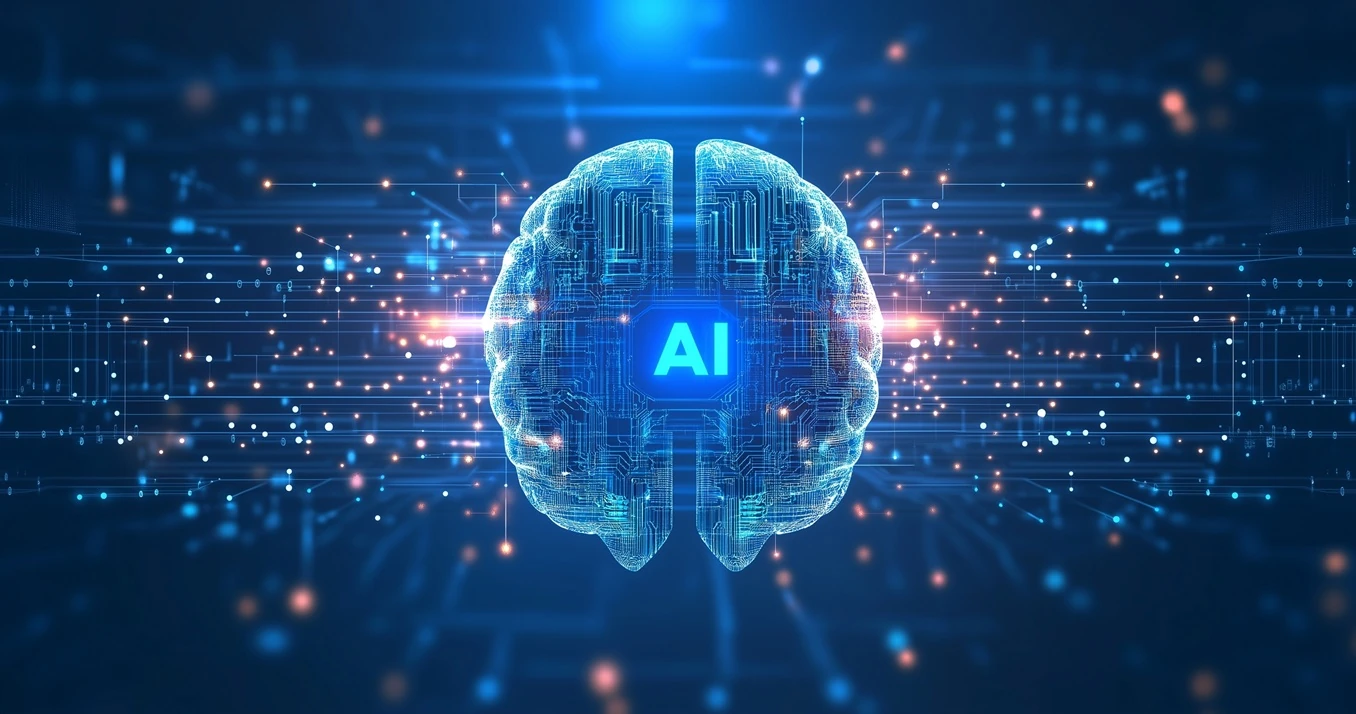Secure AI Transcription: Best Practices for Protecting Patient Data in Healthcare
Estimated reading time: 1 minutes
Key Takeaways
- AI transcription significantly improves documentation efficiency and accuracy in healthcare.
- Implementing secure AI transcription ensures the protection of sensitive patient data.
- Adhering to best practices for data protection in AI transcription is crucial for regulatory compliance.
- Choosing HIPAA-compliant transcription services safeguards patient information effectively.
- AI transcription is transforming how Australian healthcare providers handle documentation, much like in the US, but local practices must also adhere to the Privacy Act 1988 and Australian Privacy Principles (APPs) to protect patient data.
- Proactive strategies like data anonymization and regular risk assessments help de-risk patient data during transcription processes.
- Alongside improved efficiency and accuracy, it’s essential in Australia to integrate stringent data security measures and regular risk assessments to ensure AI transcription solutions fully comply with local privacy laws and industry standards.
Table of contents
- Understanding Secure AI Transcription
- Protecting Patient Data with AI
- De-risking Patient Data in AI Transcription
- Best Practices for Data Protection in AI Transcription
- HIPAA Compliant Transcription Practices
- Implementing Secure AI Transcription in Your Practice
- Frequently Asked Questions
Artificial Intelligence (AI) transcription is transforming the healthcare industry by streamlining the conversion of spoken language into written text. As more healthcare providers adopt secure AI transcription, ensuring the protection of sensitive patient information becomes paramount. This blog provides comprehensive guidance on protecting patient data with AI and de-risking patient data during transcription processes, ensuring that healthcare organizations can leverage AI technology safely and effectively. Learn more about definitions and benefits.
Understanding Secure AI Transcription
Secure AI transcription utilizes advanced machine learning and natural language processing to convert speech into text while maintaining stringent data security measures. Unlike traditional transcription methods, AI transcription offers real-time processing, seamless integration with Electronic Health Records (EHRs), and robust security protocols.
What is Secure AI Transcription?
Secure AI transcription leverages cutting-edge technology to ensure that patient data remains confidential and protected throughout the transcription process. By integrating with EHRs and utilizing real-time processing, AI transcription systems can deliver accurate and timely documentation without compromising data security. These systems employ multiple layers of security, including encryption and access controls, to safeguard sensitive information. AI Transcription in Healthcare: Benefits and Implementation Guide.
Benefits of AI in Healthcare Transcription
Implementing AI transcription in healthcare settings offers numerous advantages:
- Reduced Documentation Burden: Clinicians spend less time on paperwork, allowing more focus on patient care.
- Enhanced Accuracy: AI systems minimize errors, ensuring that medical records are complete and precise.
- Faster Turnaround: Clinical notes are generated more quickly, improving workflow efficiency.
- Cost Savings: AI transcription reduces the need for manual transcription services, lowering operational costs.
Integrating best practices for data protection in AI transcription is essential to fully realize these benefits while maintaining the integrity and confidentiality of patient data.
Protecting Patient Data with AI
Ensuring the security of patient data is a top priority when utilizing AI transcription tools. Protecting patient data with AI involves implementing various technologies and mechanisms to safeguard sensitive information throughout the transcription process.
Secure Handling of Patient Data
AI transcription systems manage patient data through a combination of security protocols designed to prevent unauthorized access and data breaches. These systems are built to comply with healthcare regulations, ensuring that patient information remains confidential and secure.
Technologies and Mechanisms
Several key technologies are employed to protect patient data in AI transcription:
- End-to-End Encryption: Ensures that data is encrypted both during transmission and while at rest, preventing unauthorized access.
- Role-Based Access Controls: Restricts data access to authorized personnel based on their roles within the organization.
- Secure Cloud Infrastructures: Utilizes cloud platforms that comply with healthcare security standards, providing a safe environment for data storage and processing.
These technologies work together to create a secure environment for AI transcription, safeguarding patient information from potential threats.
Real-World Examples
Successful implementation of secure AI transcription can be seen in platforms like Nuance’s Dragon Medical One and Deepgram. These platforms use robust encryption methods and secure infrastructures to protect patient data effectively.
For instance, Nuance’s Dragon Medical One employs 256-bit encryption and is hosted on Microsoft Azure, which meets HIPAA and HITECH requirements. Similarly, Deepgram offers on-premises deployment options, allowing organizations to maintain full control over their data within their own networks.
Explore secure AI transcription platforms
De-risking Patient Data in AI Transcription
While AI transcription provides numerous security benefits, it is essential to proactively address potential risks to de-risk patient data. Identifying vulnerabilities and implementing strategies to mitigate threats are crucial steps in maintaining data security.
Identify Potential Risks
AI transcription systems, like any digital solution, can face several security challenges:
- Data Breaches: Unauthorized access to sensitive patient information.
- Unauthorized Access: Individuals accessing data without proper permissions.
- Data Loss: Accidental or malicious deletion of important records.
Recognizing these risks allows healthcare organizations to implement effective measures to protect patient data.
Strategies to De-risk Patient Data
Implementing the following strategies can significantly reduce the risks associated with AI transcription:
- Data Anonymization: Removing personal identifiers from transcripts to protect patient privacy. Techniques such as masking or pseudonymization ensure that data cannot be traced back to individual patients.
- Secure Data Storage Solutions: Deciding between on-premises and cloud-based storage solutions based on organizational needs and security requirements. Both options offer robust security features, but organizations must choose the one that best fits their operational model.
- Regular Risk Assessments: Conducting periodic security audits and updating protocols to address new and emerging threats. Regular assessments help identify and rectify vulnerabilities before they can be exploited.
Incident Response Planning

Having a robust incident response plan is vital in the event of a data breach or security incident. This plan should outline the steps to be taken immediately after an incident is detected, including containment, investigation, and communication with affected parties. A well-prepared response can minimize the impact of security breaches and restore trust with patients.
Further reading on de-risking patient data
Best Practices for Data Protection in AI Transcription
Adhering to best practices for data protection in AI transcription ensures that patient data remains secure and compliant with regulatory standards. Implementing these practices involves a combination of technical measures, policies, and ongoing training.
Implementing Strong Encryption Methods
Using robust encryption standards, such as AES-256 or higher, is essential for securing data both in transit and at rest. Encryption ensures that even if data is intercepted or accessed without authorization, it remains unreadable and unusable.
Ensuring Secure Access Controls and Authentication
Restricting access to AI transcription systems through multi-factor authentication (MFA) and role-based access controls (RBAC) helps prevent unauthorized individuals from accessing sensitive data. MFA adds an extra layer of security by requiring multiple forms of verification before granting access.
Regularly Updating and Patching AI Transcription Software
Keeping AI transcription software up-to-date is critical for protecting against known vulnerabilities. Regular updates and patches address security flaws and enhance the overall security posture of the transcription system.
Conducting Employee Training on Data Security
Educating staff on best practices for data protection and recognizing potential security threats is vital. Regular training sessions help ensure that employees understand their role in maintaining data security and are equipped to handle sensitive information responsibly.
Periodic Risk Assessments
Conducting regular evaluations of security measures helps identify and address potential gaps proactively. Periodic risk assessments ensure that data protection strategies remain effective in the face of evolving threats.
Discover best practices for data protection
Australian Compliant Transcription Practices
Compliance with local data protection laws, particularly the Privacy Act 1988 and the Australian Privacy Principles (APPs), is critical for healthcare providers across Australia using AI transcription services. These practices help safeguard patient information while ensuring that the benefits of AI-driven technology are fully realised within the local regulatory framework.
- Significance of Australian Compliance
Adhering to Australian privacy laws is vital to protect sensitive patient data and build trust among patients and healthcare providers. Healthcare organisations must implement measures that comply with the Privacy Act 1988, ensuring that personal data is processed fairly, securely, and only for the purposes for which it was collected. - Australian Requirements for AI Transcription Services
To ensure compliance in line with the Privacy Act 1988 and APPs, AI transcription systems should incorporate the following measures:
- Data Minimisation and Purpose Limitation: Only collect and process patient data necessary for clinical documentation and care. Ensure clear communication on data usage at the point of collection.
- Strong Encryption and Secure Networks: Use industry-standard encryption protocols (e.g. AES-256) during data transit and at rest. Healthcare providers should deploy secure cloud infrastructures or on-premises solutions that meet local security benchmarks.
- Access Controls and Authentication: Implement role-based access controls and multi-factor authentication to limit access to patient data to authorised personnel only, thus aligning with the APPs requirement to protect data from misuse or unauthorised disclosure.
- Regular Risk Assessments and Privacy Impact Assessments (PIAs): Conduct ongoing security audits and formal PIAs to detect vulnerabilities and ensure the system’s compliance with evolving Australian standards and technological trends.
- Incident Response Procedures: Develop and maintain robust breach notification policies, ensuring timely notification to the Office of the Australian Information Commissioner (OAIC) and affected patients if a data breach occurs.
- Selecting an Australian-Compliant Provider
When choosing an AI transcription vendor, consider the following evaluation criteria:- Evidence of Compliance: Ensure the provider conforms to the Privacy Act 1988 and demonstrates transparency with practices aligning to the APPs.
- Security Infrastructure: Review their encryption standards, secure data storage options, and access management systems.
- Local Reputation: Assess the vendor’s track record with Australian healthcare organisations and their responsiveness to local privacy concerns.
By integrating these Australian compliant transcription practices, healthcare organisations can confidently harness the advantages of AI transcription while ensuring full adherence to local regulations and safeguarding patient data in a trusted environment.
At LYFE AI, we pride ourselves on our Australia-hosted transcription platform, designed specifically to meet the needs of local healthcare providers. By processing and storing all data within Australia, our solution not only adheres to the Privacy Act 1988 and Australian Privacy Principles but also delivers enhanced security, efficient response times, and local support tailored to the Australian market. This localised hosting ensures that patient data remains within national borders, reinforcing trust, compliance, and a seamless integration with your existing workflows.
HIPAA Compliant Transcription Practices
Compliance with the Health Insurance Portability and Accountability Act (HIPAA) is mandatory for healthcare providers handling patient data. HIPAA compliant transcription practices ensure that AI transcription services meet stringent regulatory requirements, protecting both patient information and organizational integrity.
Significance of HIPAA Compliance
HIPAA compliance is crucial for safeguarding patient privacy and ensuring that healthcare providers adhere to national standards for data protection. Non-compliance can result in severe penalties, including fines and legal repercussions.
HIPAA Requirements for AI Transcription Services
AI transcription services must meet specific HIPAA standards to ensure compliance:
- Signed Business Associate Agreements (BAAs): Legal agreements that outline the responsibilities of transcription service providers in handling patient data.
- Comprehensive Audit Logs: Detailed records tracking data access and changes, ensuring transparency and accountability.
- Secure Transmission Methods: Utilizing encrypted channels for transmitting Protected Health Information (PHI) to prevent unauthorized interception.
- Breach Notification and Mitigation Processes: Procedures for promptly addressing and mitigating the impact of any data breaches.
Selecting HIPAA-Compliant Providers
When choosing an AI transcription vendor, consider the following criteria to ensure HIPAA compliance:
- Certification and Compliance: Verify that the provider has relevant certifications, such as HITRUST CSF, indicating adherence to multiple regulatory frameworks.
- Security Measures: Assess the provider’s encryption standards, access controls, and data storage practices.
- Reputation and Reliability: Research the provider’s track record in maintaining data security and compliance with healthcare regulations.
Explore HIPAA-compliant transcription services
Data Sovereignty in AI: Compliance and Data Protection in Australia
Implementing Secure AI Transcription in Your Practice
Integrating secure AI transcription into your healthcare practice involves a systematic approach to ensure smooth adoption and ongoing data security. Follow these steps to successfully implement AI transcription:
Step-by-Step Integration Guide
- Assess Current Workflows and Security Protocols:
- Evaluate existing documentation processes.
- Identify areas where AI transcription can improve efficiency and data security.
- Research and Select a HIPAA-Compliant Provider:
- Use the criteria outlined in the HIPAA compliance section to choose a suitable transcription service.
- Consider factors such as encryption standards, access controls, and compliance certifications.
- Develop an Implementation Plan:
- Create a detailed roadmap for integrating AI transcription, including timelines, resource allocation, and designated responsibilities.
- Ensure that all stakeholders are informed and involved in the planning process.
- Staff Training and Pilot Testing:
- Conduct training sessions to educate employees on using AI transcription tools securely.
- Implement pilot tests to identify potential issues and make necessary adjustments before full-scale deployment.
- Gradual Rollout:
- Start by using AI transcription in low-risk areas to minimize potential disruptions.
- Expand usage progressively as confidence in the system grows and initial challenges are addressed.
- Continuous Monitoring and Maintenance:
- Regularly track system performance and security metrics to ensure ongoing effectiveness.
- Address any issues promptly to maintain the integrity of the transcription system.
- Regular Policy Reviews:
- Periodically update security policies and procedures to adapt to new challenges and technological advancements.
- Ensure that policies remain aligned with regulatory requirements and industry best practices.
Resources and Tools
Utilize the following tools and resources to support the implementation and maintenance of secure AI transcription:
- Monitoring Software: Tools that track system performance and detect potential security breaches.
- Compliance Checklists: Comprehensive lists that ensure all regulatory requirements are met during implementation.
- Training Materials: Educational resources to keep staff informed about best practices and security protocols.
Learn more about implementing secure AI transcription
Managed AI Services: Boosting Efficiency for Modern Businesses
Frequently Asked Questions
1. What makes AI transcription secure in healthcare?
AI transcription in healthcare is secure due to the implementation of advanced encryption methods, role-based access controls, and compliance with regulatory standards like HIPAA. These measures ensure that patient data remains confidential and protected throughout the transcription process.
2. How does AI transcription integrate with Electronic Health Records (EHRs)?
AI transcription systems seamlessly integrate with EHRs by providing real-time processing and accurate documentation. This integration allows for efficient updating of patient records, reducing manual entry errors and enhancing overall workflow efficiency.
3. What are the key benefits of using secure AI transcription in healthcare?
Key benefits include reduced documentation burden on clinicians, enhanced accuracy of medical records, faster turnaround times for clinical notes, and significant cost savings by minimizing the need for manual transcription services.
4. How can healthcare organizations ensure HIPAA compliance with AI transcription services?
Healthcare organizations can ensure HIPAA compliance by selecting AI transcription providers that offer signed Business Associate Agreements (BAAs), comprehensive audit logs, secure transmission methods, and breach notification processes. Additionally, regular security assessments and staff training are essential.
5. What strategies can be implemented to de-risk patient data in AI transcription?
Strategies include data anonymization to protect patient privacy, choosing secure data storage solutions, conducting regular risk assessments, and having a robust incident response plan in place to address any potential data breaches promptly.
Conclusion
Integrating secure AI transcription into healthcare practices brings significant benefits—ranging from improved documentation efficiency and enhanced accuracy to notable cost savings. However, safeguarding patient data through robust de-risking strategies and adherence to compliance frameworks is essential for maintaining privacy and regulatory accountability. As outlined in this blog, healthcare organizations can confidently leverage AI technology by implementing best practices for data protection that address both current challenges and emerging threats.
At LYFE AI, our locally hosted transcription platform exemplifies these best practices, ensuring that all patient data is processed and stored securely within Australia. This approach not only aligns with the Privacy Act 1988 and Australian Privacy Principles but also offers rapid response times and dedicated local support, reinforcing trust and reliability in your healthcare practice.
Adopting secure and compliant AI transcription practices not only protects patient data but also builds enduring trust within the healthcare system. As AI technology continues to evolve, it is crucial for providers to remain informed and proactive about security measures.
Take Action Today: Implement the best practices discussed and consider partnering with a HIPAA-compliant AI transcription provider to enhance your healthcare practice’s efficiency and data security. For expert advice and personalised consultations on integrating secure AI transcription systems, Contact LYFE AI today.
Additional Resources
Further Reading
- The Rise of AI in Medical Transcription
- Revolutionizing Healthcare with AI Transcription
- Understanding HIPAA Compliance for AI Transcription
Contact Information
For personalized consultations or expert assistance in implementing secure AI transcription, reach out to us:
- Email: human@lyfeai.com.au
- Phone: (61) 2 4081 9516
- Address: 59 Mitchell Road, Cardiff, NSW, 2285
Useful Tools and Platforms
- Nuance’s Dragon Medical One: Visit Website
- Deepgram On-Premises: Explore Options
- AWS Transcribe Medical: Learn More
- HITRUST CSF: Access Information



